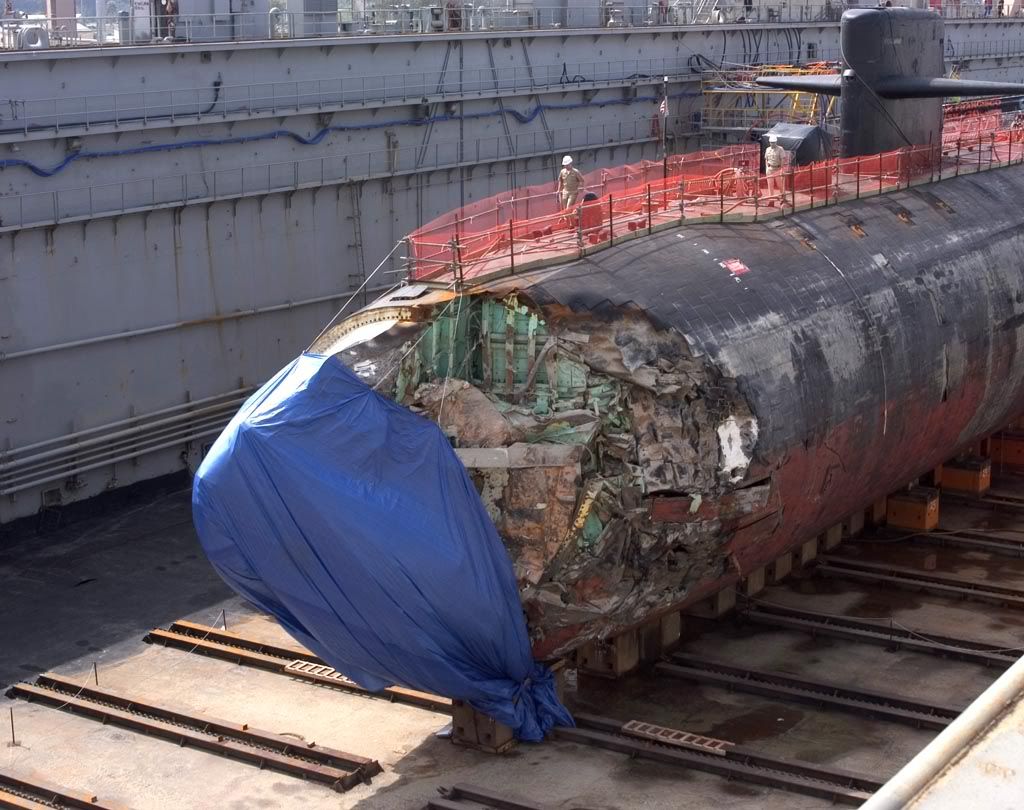Unknown Soldier
Veteran
050127-N-4658L-030 Apra Harbor, Guam (Jan. 27, 2005) - The Los Angeles-class fast-attack submarine USS San Francisco (SSN 711) in dry dock to assess damage sustained after running aground approximately 350 miles south of Guam Jan. 8, 2005. The Navy former dry dock known as “Big Blue†is capable of docking ships that weigh up to 40,000 Long Tons. The Navy certified Big Blue for the one-time docking of San Francisco. San Francisco is the second fast-attack submarine to be attached to the forward-deployed Submarine Squadron Fifteen, home ported on board Naval Base Guam.
http://www.navy.mil/view_single.asp?id=21183
http://www.navy.mil/view_single.asp?id=21182

http://www.navy.mil/view_single.asp?id=21183
http://www.navy.mil/view_single.asp?id=21182

